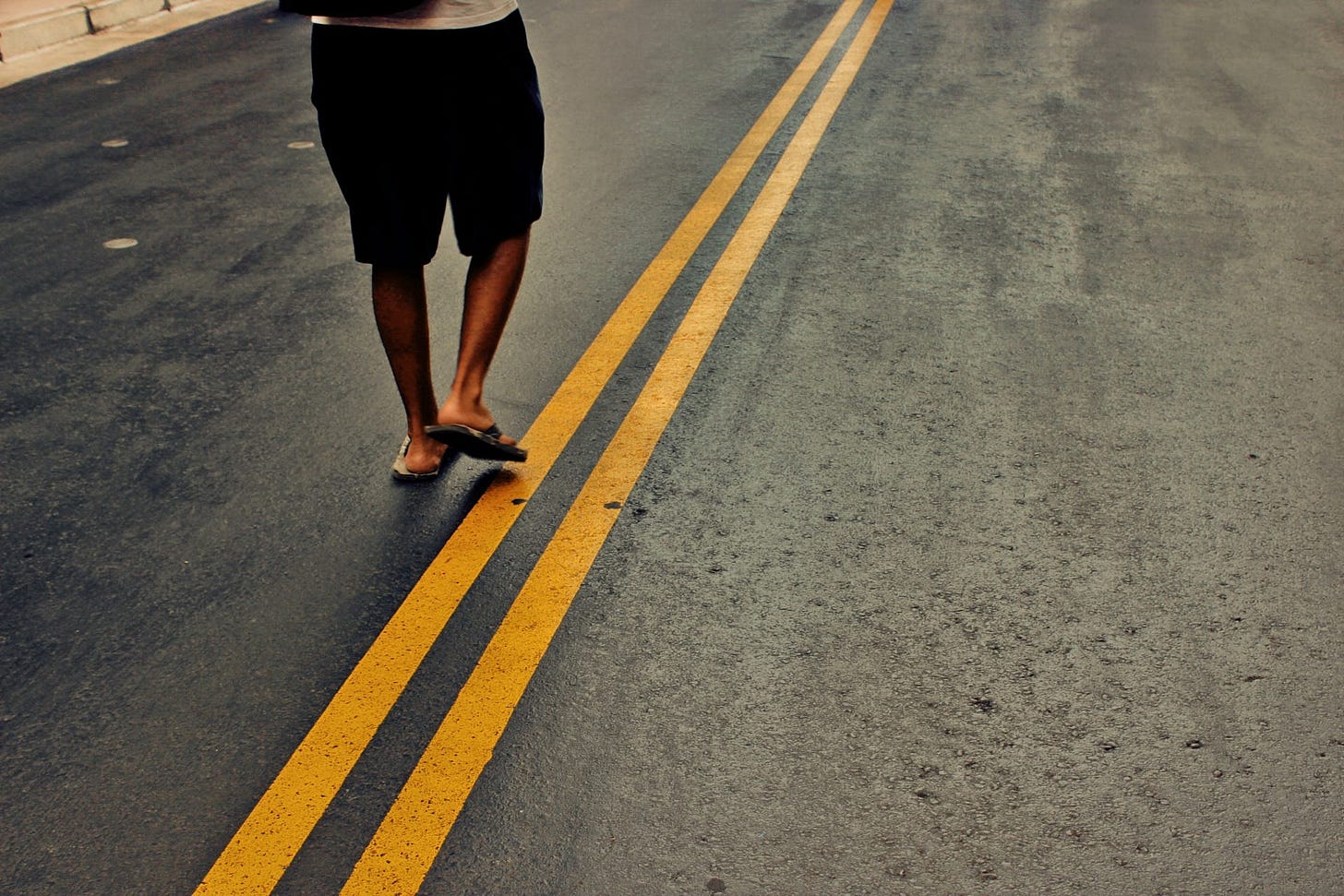Flip-flop sandals can lead to lower body pain, injury, and altered running, rucking, and lifting mechanics.
You’ll learn: How often you should wear flip flops, better alternatives, and how to strengthen your feet to perform better and avoid lower body injuries.
Updates:
If you’re new here, 2% is the internet’s best site for actionable, informative, and fun health and wellness info.
We’re also Member supported. Please consider becoming a Member below, which gives you full access to all our killer content and perks.
The audio version of this post is at the bottom of this post for Members, as it always is Weds and Fri.
Massive thanks to our sponsors GORUCK, Momentous, and Maui Nui … more on them and discounts below.
Now onto the post. The other day I was wearing flip-flops and walked far more than I planned.
The following day I went for a long run. Everything below my waist felt off and more sore than usual. The experience reminded me of a conversation I had years back.
The gist of this post is this: Flip-flops might make you feel like you’re on vacation, but they’re actually making your feet work overtime.
I learned this from Dr. Doug Kechijian, D.P.T., doctor of physical therapy at Resilient Performance Systems.
You may remember him from The Comfort Crisis. He’s the brilliant savage who got me physically ready to spend more than a month in the Arctic.
Bonus: He and I are releasing a full training program for outdoor athletes. It helps you perform better and not break Rule 2 outdoors. Founding Members will get it for free.
A few years ago, I showed up to train with Doug while wearing flip-flops, which I’d worn to walk across New York City. He had some wisdom for me.
Today we’ll cover:
The problem with flip-flops.
The best way to wear them to avoid problems.
Better alternatives.
A science-backed routine to strengthen your feet and perform better.
The problem with flip-flops
In short
Flip-flops force you to clench your toes to stay on. It’s an unnatural walking position that can lead to problems in your feet, knees, and hips.
The details
When you wear the thonged sandals, you have to slightly “clench” your toes to keep them on, Doug explained. And that’s not a natural position for your feet.
Try this yourself:
Take your shoes off. Take a few normal steps, paying attention to how your midfoot and toes bend at the end as your heel leaves the floor.
Now try it again:
Slightly “clench” your toes, curling them down toward the pads of your feet—almost like you’re trying to make a “fist” with your feet. Now take a few more steps.
It doesn’t feel the same. Your foot will be stiffer, and the step won’t “flow” like the first step. Flip flops ask you to do that for thousands of steps.
And this isn’t just a casual observation. Researchers at Auburn University took 56 people and compared how they walked in flip-flops versus sneakers.
The results: Flip flops altered how the participants walked.
The researchers wrote:
Flip-flops resulted in a shorter stride, a larger ankle angle at the beginning of double support and during the swing phase, a smaller braking impulse, and a shorter stance time compared with sneakers.
The constant tension in your foot and altered gait can eventually cause muscular issues in your feet and calves. That can lead to the painful condition plantar fasciitis—also called “jogger’s heel”—when you run. You’ll feel a sharp shooting pain in the bottom of your heels with each step.
In extreme cases, flip-flops may even be the cause of other lower-body issues like knee pain.
How to wear flip-flops
In short
Wear flip-flops on days you know you won’t walk far.
The details
Let’s face it: Flip-flops are a summertime staple. The point of this post isn’t to tell you not to wear flip-flops.
Wear them—but cap the distance you travel in the sandals. Don’t be like me and walk miles and miles.
Please also note that some people can wear flip flops their entire lives and be fine. But for most of us—especially people who run, ruck, and lift—wearing them too often can lead to lower body issues.
It’s truly the dose that makes the poison, Doug told me.
“If you have to walk more than, say, 10 blocks, you probably want to wear regular shoes,” Doug said. “But if you’re just walking down to the beach or hanging out at a barbecue, flip-flops aren’t going to cause any real problems.”




